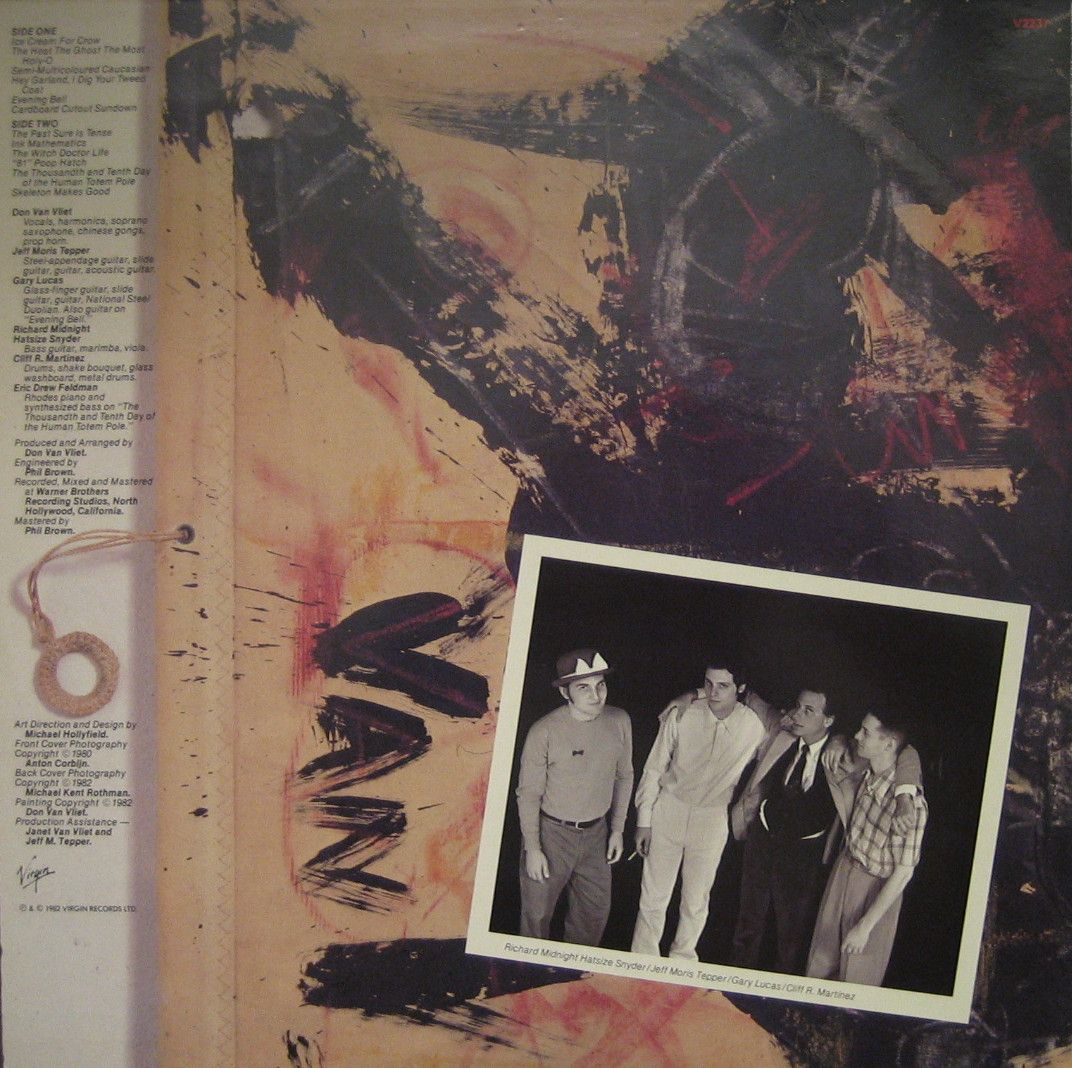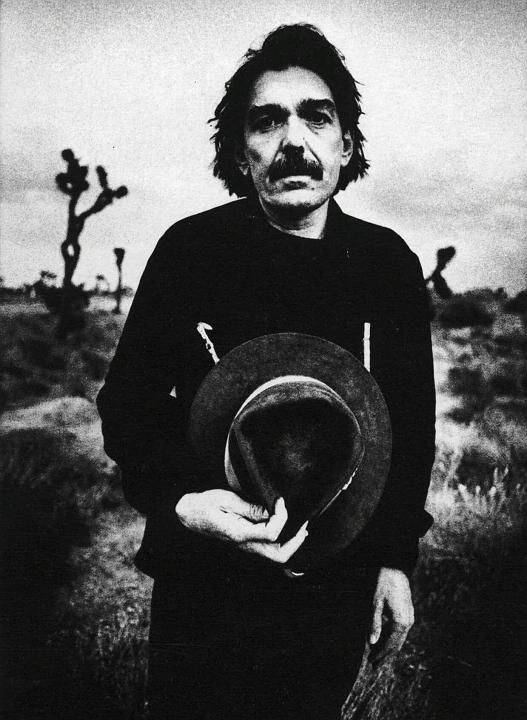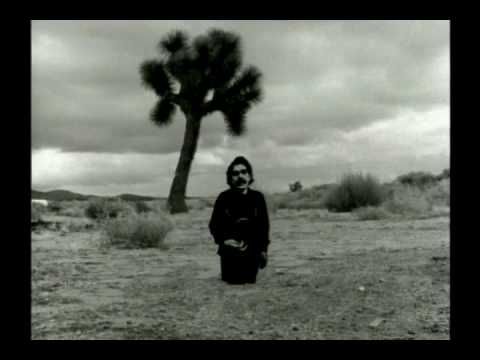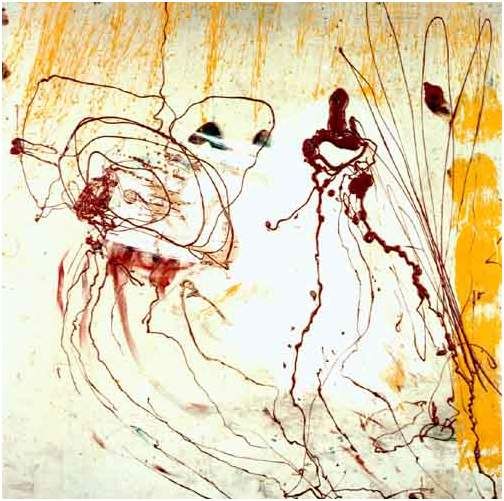

Recently Kill Your Pet Puppy posts have been serving as either birthday dedications or orbituaries for relevant artists to the site / original fanzine that are no longer with us. Today Don Van Vliet A.K.A Captain Beefheart sadly passed on at the age of 69 reportedly from complications due to multiple sclerosis which he suffered late on in his life.
Uploaded today is the second record that I purchased by Captain Beefheart, the first being ‘Doc At The Rader Station’ a year or so before. Both these records were released by Virgin Records and unbeknown to me at the time this second record in the Virgin set was to be Captain Beefheart’s last studio recorded offering, ‘Doc At The Radar Station’ being the penultimate release.
The text of two reviews of ‘Ice Cream For Crows’ from 1982 and the original Don Van Vliet artwork is lifted with love from the beefheart.com site. The Beefheart orbituary text was robbed in broad daylight from auntie Beeb. Anton Corbijn set up the black and white photographs beautifully.
The ‘Doc At The Radar Station’ record is on this site and may be listened to HERE

Written by Edwin Pouncey, from Sounds, September 1982.
TO THE casual observer, Captain Beefheart’s vibe must appear to be similar to the window blind painting he has created to adorn his latest batch of surreal surface barking.
It looks and sounds a blur, right? No. You’ve got to scratch deep down to relieve this particular musical itch. You’ve got to get some of that dark paint under your fingernails.
‘Captain Beefburger’, as our illustrious Editor mockingly refers to him, wallows deep and silent for years shrouded by his own notoriety and then without warning, emerges into the musical gloom, armed with tunes and words of earthy energy that only he can properly manipulate.
Only the ‘master’ can conjure up such home-spun fantasies, thick and bloated with corkscrew language, and make them sound totally convincing. The secret is that the Cap is a veritable gourmet of words, he relishes the sounds they make in his throat and chews them over before releasing it all in a gush of Fleischer cartoon imagery that bobs and weaves effortlessly and free, all of which is biffed and butted into a reckless dance shape by the currant, wildly shorn, Magic Band.
For the hardened Beefheart devotee who has followed every twist and trick, there are initially few surprises on ‘Ice Cream For Crow’, little artistic advancement has seemingly been made and it would be easy to dismiss it as just being ‘another’ Beefheart album.
This may well be the case, but look into it properly and the full raw power unleashes itself and explodes in front of you, a power that will delight the purist and dismay the soulless.
Chief glories on here for me are the spoken poem ‘”81″ Poop Hatch’ and the following ‘The Thousandth And Tenth Day Of The Human Totem Pole’ which is also spoken but accompanied by the Magic Band and played out with a quirky clockwork tension that includes a breathing, free form Beefheart saxophone solo nodding elegantly in the direction of Ornette Coleman. Both tracks are pure gems of Van Vliet open-hearted prose that huff, puff and stutter out blasts of rich verse making me yearn for the release of a spoken and unaccompanied Beefheart album one day.
The other songs are equally blessed with the same gruff affection that he pours into his compositions, all lovingly thrashed out and individually labelled with such flamboyant titles as ‘Skeleton Makes Good’ and ‘Hey Garland I Dig Your Tweed Coat’ where Pena from ‘Trout Mask Replica’ makes a fleeting re-appearance.
Finally, it is in his favour that unlike many of his Sixties contemporaries floundering way out of their depth, Beefheart has managed to haul his music safely on board the Eighties without ever having to resort to eating crow of any flavour. This one however, beak and all, tastes real good.

Written by Robert Palmer, The New York Times, September 1982.
Don Van Vliet, who is better known as Captain Beefheart, is still in the forefront of rock’s avant-garde, more than 15 years after the release of his first album. Although he has polished his music and changed the personnel of his Magic Band a number of times since the mid-1960’s, the broad outlines of his style were already in place the first time he entered a recording studio. They include fractured rhythms; dislocated country blues riffs; disjunct melodies and passages of counterpoint that sometimes recall Stravinsky; extravagantly gruff singing and croaking, and occasional bursts of clattering noise.
”Ice Cream for Crow” (Virgin/ Epic), the 12th album by Captain Beefheart and the Magic Band, represents a return to Beefheart basics after the expansive use of synthesized orchestral effects and borrowings from Chinese opera on ”Doc at the Radar Station” (1981).
The title tune is being released as a single, Mr. Van Vliet’s first since the mid-60’s – and could actually get some airplay. It is a Beefheart blues, with whining slide guitars and a hoarse, urgent vocal. The lyrics, which sound like a Carlos Castaneda / Don Juan adventure and are spotted with cryptic instructions like ”light the fire piano,” aren’t exactly typical blues fare. But here, and on the rest of the album, Mr. Van Vliet proves once again that when it comes to capturing the feeling of archaic, Delta-style blues, he is the only white performer who really gets it right.
Don Van Vliet was born in Glendale, Calif., in 1941. As a teenager in Lancaster, Calif., he had his own local television show and was recognized locally as a painter and a sculptor. One of his best friends was his fellow student, Frank Zappa.
The first appearances by Captain Beefheart and his Magic Band coincided with the widespread use of LSD in Southern California, and drugs may have ”led” a number of his early fans to ”get into” the music. But Mr. Van Vliet insisted that his singular music was not drug-inspired.
Sitting in the Manhattan living room of the guitarist Gary Lucas, who is the Magic Band’s newest member, Don Van Vliet shut his eyes, squinted, and said, ”It’s going to ring.” The telephone rang as if on cue. Mr. Lucas laughed nervously and said that sort of thing happens all the time.
Mr. Van Vliet said his family was from Louisiana, and various relatives went west to visit the Van Vliet household when he was growing up. In particular, he remembered an uncle who was a kind of singing evangelist, a free spirit who had spent a number of years roaming the countryside, preaching the gospel and accompanying himself by playing guitar with a slider.
Could that uncle have been a musical influence? ”Oh, absolutely,” Mr. Van Vliet said. It certainly made sense; that natural, unforced feeling for rural blues had to come from somewhere, and it came from rural gospel music, which is musically identical to blues.
After talking at some length about C.S. Lewis, one of his favorite authors, Mr. Van Vliet mentioned his admiration for Stravinsky. That was no surprise. His complex rhythms and difficult melodic intervals are evidence of a Stravinsky influence, and that influence is particularly evident on the new album.
In the past, Mr. Van Vliet’s complex, brittle arrangements and the splashy playing of his various drummers tended to disguise the classical severity of his original ideas. On ”Ice Cream for Crow,” the stripped-down instrumentation and the absense of decoration in Cliff R. Martinez’s sparse drumming serve to emphasize the classicism of the melodies and rhythmic patterns.
Until recently, nobody sounded anything like Captain Beefheart and the Magic Band. But during the last few years, avant-garde rock units as disparate as Pere Ubu, The Fall and Public Image Ltd. have been making music that sounds something like the Magic Band. Perhaps that’s why the music on ”Ice Cream for Crow” sounds a little more familiar on first listening than any previous Captain Beefheart album. But it probably isn’t the only reason.
The Magic Band’s new guitarist, Gary Lucas, doesn’t sound as thoroughly self-taught as his predecessors. He brings a certain polish to his playing of Mr. Van Vliet’s finger-flexing compositions (especially on the solo guitar showpiece ”Evening Bell”) that connects it, however tenuously, to more conventional music. And Mr. Van Vliet has chosen to work with some familiar musical components this time out, like the ringing, major-triad consonance of the guitar parts on the instrumental ”Semi-Multicolored Caucasian.”
This relatively melodious side of Mr. Van Vliet’s music has rarely been displayed so winningly. It contrasts provocatively with the squabbling saxophones and all-out noise attack of compositions like ”The Thousandth and Tenth Day of the Human Totem Pole,” making ”Ice Cream for Crow” the most varied and, on the whole, the most accessible of the hard-core Captain Beefheart albums. (Some early attempts to make the Captain’s music more palatable to the masses have not been granted a place in the Beefheart canon.)
It may not sell in impressive quantities; Captain Beefheart albums never have. But anyone who is interested in rock’s limits and possibilities, and in where the music might be going, will want to hear it.

Obituary
With a growling bass voice, that whooped and hollered in the manner of one of his earliest heroes, bluesman Howlin’ Wolf, Captain Beefheart became a hugely influential figure in rock music.
Artists like Tom Waits, Mark E Smith of The Fall, John Lydon of Public Image Limited and Nick Cave are among those who have cited him as an influence.
Later, under his real name Don Van Vliet, he became an acclaimed painter.
He was born in 1941 in suburban Glendale, California, where his father drove a baker’s van. He was an only child, and his grandparents lived next door. His family indulged his artistic talents – he was sculpting from the age of four.
As a teenager, he discovered the blues along with childhood friend Frank Zappa, who was to remain a friend, and rival, throughout his life.
Together, in Lancaster, California, in the Mojave Desert, Zappa and Van Vliet came up with the name Captain Beefheart and the latter formed a blues band, His Magic Band, in the mid-1960s.
Though the band’s title remained with Beefheart over two decades, the band’s membership was to change frequently.
After establishing themselves with a small but devoted following, the band, augmented by a 20-year-old slide guitarist named Ry Cooder, made their first album, Safe as Milk, in 1967.
Although blues-inspired, the album reflected the era of psychedelia by its surrealist tendencies. It also hinted at the avante-garde that was to become Captain Beefheart’s trademark.
One of the many Magic Band line ups Various record labels wanted to establish Captain Beefheart as an American alternative to the British blues bands of the 1960s or as a pop band to rival The Beatles.
But Van Vliet would not allow them to curb his artistic expression and there were frequent fallings out.
Many fans regard his masterpiece to be the 1969 album, ‘Trout Mask Replica’, a dadaist blend of blues, free-form jazz, rock and beat poetry.
Sometimes manic, always unpredictable, the album was at first deemed as impenetrable. Yet, to its supporters, it showed itself to be a complex mix of metaphor and use of wordplay. “A verbal prankster” was how British DJ John Peel described Beefheart.
The album was produced by Frank Zappa who gave his friend full artistic rein.
“If it had been produced by any professional, famous producer,” Zappa said later, “there could have been a number of suicides involved.”
John Peel described Beefheart as being ” driven in pursuit of his music to the borderline between imbalance and genius.”
‘Trout Mask Replica’ is considered his masterpiece He suffered constantly from anxiety attacks. For ‘Trout Mask Replica’, he kept his musicians in a house for the eight months it took to write the double album, only allowing them out once a week to get groceries.
There was very little money with which to buy anything but the most basic of provisions. The conditions were described by one band member as “cult-like”.When Zappa eventually got to record the album, it took less than five hours. The lyrics were nonsensical and surreal, and the band members were given nicknames like Mascara Snake, Zoot Horn Rollo and Rockette Morton.
The album dispensed with a regular rock beat, constantly changing its songs’ time signatures. “I don’t like hypnotics,” said Beefheart, “I want things to change like the patterns and shadows that fall from the sun.”
His next album, ‘Lick My Decals Off, Baby’ was equally experimental in nature, but subsequent offerings such as ‘The Spotlight Kid’ and ‘Clear Spot’ were far more commercially viable.
Beefheart’s often errant behaviour caused no end of problems with record companies and, in the 1970s, he became embroiled in various legal disputes which precluded his ability to tour. This deprived audiences of one of the finest live acts of the era.
He also proved too hard a taskmaster for many of the band members and there was constant to-ing and fro-ing.
His next two albums ‘Unconditionally Guaranteed’ and ‘Bluejeans and Moonbeams’ were derided by fans as being too commercial, but the later ‘Doc At The Radar Station’ and ‘Ice Cream For Crow’ were acclaimed.
He gave up music in favour of abstract art. Throughout his music career, Captain Beefheart kept up a prolific output of sketches and paintings. He was eventually persuaded that if he was to be taken seriously as an artist and not regarded simply as a musician who paints, he should give up music.
He returned to his home near the Mojave Desert in southern California and became reclusive. He became more and more renowned as an abstract expressionist whose work, like his music, is regarded as original innovative. It fetches high prices.
Eventually, Captain Beefheart / Don Van Vliet was unable to paint after contracting multiple sclerosis.
His work, whether in music or drawing, was never mainstream and only ever gained a relatively small following, but he was a larger-than-life character who pushed the boundaries of his art in a way which influenced many who followed in his wake.

John Serpico
December 19, 2010 at 12:16 amTonight the world is a sadder place.
pinkpressthreat
December 22, 2010 at 1:40 pmHere Here 🙁